Dedicated to our mother, Lindy Anne Lund. On this this Mother’s Day, we’re celebrating each day she was with us, carrying the lessons she taught us and remembering her each day she is without us. - Lindsey Vonn, Karin Kildow, Dylan Kildow, Reed Kildow, and Laura Kildow
By Laura Kildow
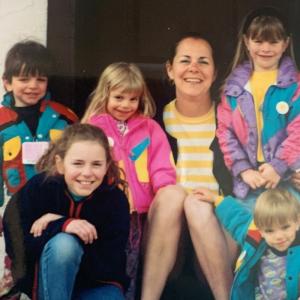
My mom, Lindy, was a soft-spoken, warm, and loving mother who was gentle and understanding of her children. Her parenting was more about nurturing than about any guidance or obedience. She always said, “Independence is the most important thing to teach to your children, though it is the hardest thing to accept as a parent.” She taught us how to be individuals first and had a special and different relationship with each of us.
Lindsey [Vonn] is the oldest (and undoubtedly the most well-known) of the five children and followed in my dad’s footsteps as a skier. She inherited my mom’s determination to get through countless injuries to become the most decorated downhill skier of all time and Olympic gold medalist.
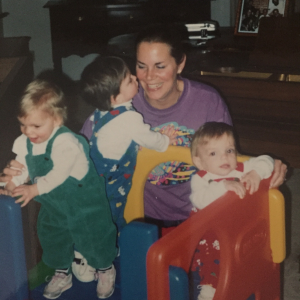
Karin, the second oldest, inherited my mom’s gregarious spirit and business savvy. My two brothers, Dylan and Reed, and I are triplets and are as different from each other as three people can be, except for the stubbornness that we all got from our mom.
All five of us are in our thirties now with busy lives and are spread out across the country. We get together here and there, but to have everyone at the same place at once is a special and rare occurrence. So when my mom got her diagnosis and we all came together to support her, I know that meant the world to her.
Our mom was no stranger to struggles (the least of which was having five kids!): from rheumatic fever, a stroke at age 32, a divorce, and finally, her ALS diagnosis, there was never a hurdle she did not face without positivity and optimism.
So this Mother’s Day, we want to celebrate her, not for her struggles, but for how she overcame them. Yes, there are struggles, grief, loss and unbelievable pain that come with ALS; but there is also hope, humility, grace, and unbelievable beauty. Our mother lived exactly one year from her diagnosis to her death on August 26, 2022.
The Beginning - August 26, 2021
It was a hot day in June when we got a text from mom on our family group chat. “Hi guys, I wanted to let you know that I went into the ER yesterday. I had been picking up sticks in the backyard and felt unable to walk (balance + no energy). My blood pressure was 190/90 which is VERY high for me. They did a CT scan and MRI and found NO evidence of another stroke or other heart problem. I was released at 7:30 and will make an appointment with my neurologist on Tuesday. Just wanted to keep you posted!!! Love you all!!”
Unwittingly, this text started our journey with ALS. Of course, we looked for all the obvious answers: heat stroke, poor diet, or maybe the pandemic caused her to be out of shape, but we always ended up blaming it on “the stroke.” Our Mom suffered a stroke that was discovered while she was giving birth to our oldest sister, Lindsey. Being naturally athletic and physically fit all of her life, after her stroke my mom had a bit of a limp, couldn’t run, and her balance was getting worse with age—now 69 years old.
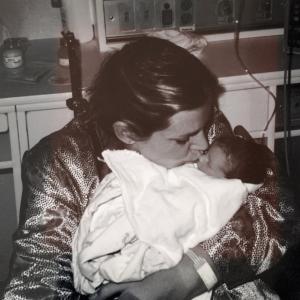
After the text message, we started cooking for her more and getting her to eat better. It was during one of these home-cooked meals that another incident happened. In the middle of a dinner with friends, she started choking. Her husband rushed to give her the Heimlich maneuver. We were all shaken up by the event, but apparently this had been happening more and more often. My mom promised she wouldn’t try to talk while eating anymore.
We all grew increasingly worried. My mom’s speech was off, and her energy was low. Something was wrong and, after a while, we couldn’t deny that these symptoms were connected, and these incidents weren’t happening at random. My mom had done all the tests she could with her local neurologist. The solution they thought might help was an injection into her spine. Her walking was getting worse because of her not being able to pick up her feet enough.
Serendipitously, Lindsey had made a connection with someone at Mayo Clinic, and she insisted Mom go there. Despite trusting her local neurologist, my mom listened to her gut and wanted to get a second opinion. Lindsey made the call and my mom and her husband made the arrangements for their first trip to Mayo. Unknown to us at the time, the connection Lindsey had made was to a doctor who happened to be an ALS specialist.
My mom had tests all day. I hadn’t been worried; I was curious to get to the bottom of whatever was wrong with her. She had always been in good health. She swam, did yoga, and went on walks regularly. Besides her eating habits—which consisted of protein bars, frozen pizza, and low-fat ice cream—I can’t remember ever having seen her down with a cold.
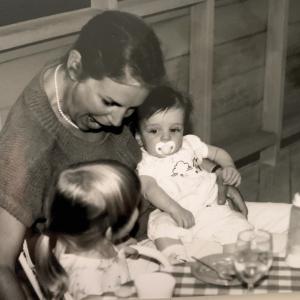
I didn’t know what it was, but I started to cry anyway. I heard the fear, the sadness, the hopelessness in her voice. I told her it would be okay and to call everyone she had to call. I immediately did some research, and my heart broke completely. I sank into myself and the physical world I had been living in just a second ago, stopped existing completely. There were a million thoughts and questions swirling in my head, but the only one I could form was “My mom has ALS.” I knew with each passing second and minute as the reality sunk in, I would never be the same again.
We sat with my mom on her porch that humid night. Wind and rain started. We got everyone on the phone and talked for hours about reassuring thoughts and promises of togetherness. Of cures and treatments and my mom’s strength to overcome it. If she hadn’t been so tired, I would have stayed there, holding her hand until the sun came up.
The Middle - Winter 2021
I started researching right away, joined all the ALS Facebook groups, and joined my first ’Caregivers of ALS’ support group right after the diagnosis. I accidentally joined the ‘Patients of ALS’ support group and was taken aback by what I saw, I’ll admit. The reality of it was frightening. Still, I found it helpful, and I urged my family to join, too.
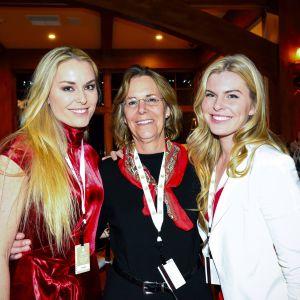
My mom, true to form, took an optimistic approach. She started to say, “Ya know? Life is terminal!” And incorporated into her morning routine a saying, “Today is another great day!”
The next big milestone was her second Mayo Clinic appointment. Most of our family went, but only some of us could join her in the doctor's office so we waited in the waiting room and listened in via Zoom. We had all done our research. We had all the right questions to ask. How do we fight this? What about this new treatment? What happens next? How do we prepare?
The ALS Association and the ALS clinic got her set up with everything. My mom got her first wheelchair, started voice banking, got pre-made meals delivered, and got equipment for handicapping her home. There was a lot to do, prepare for, and to worry about in those months but things started to settle into the “new normal.”
My mom started Radicava in January and was going to infusions, two weeks on, two weeks off. Those appointments really saved her. Every week it was someone else’s turn to take her. Her friends, her sister, her brother, my sister, Karin, etc. Everyone would take her to lunch afterward and she made a day out of it.
She was surrounded by people who supported her and who helped her to think positively. She raved about her nurses and knew all their names—and that they would give you the good cookies if you asked. During that time, there was a feeling of hope with the treatment and that carried her through.
The End - Summer 2022
In the spring months, my mom at 5’9” was down to just 104 pounds. She felt getting a feeding tube put in was no longer optional, so she made the decision to move forward easily and without any regret.
We waited for hours while she was in surgery which was only supposed to be a half hour. Finally, we heard that the surgery had gone fine but that she wasn’t doing well. Her oxygen level was low and there were a lot of secretions brought up during the surgery and she risked aspirating. After several more hours, they decided to transfer her to the ICU to watch her overnight.
When I went in the next morning, the room was dark, my mom’s face and skin were grey, and she couldn’t breathe. Her mouth was so dry because she hadn’t had anything to eat or drink since before she went into surgery. I tried to inspect every nurse's face for answers. What did they know? How bad was this? All of them were void of any answers. The worst part was not being able to understand what my mom said or needed. Between the oxygen mask and her voice going, I was always trying to guess what she was saying.
When my aunt came into the room, she became my mom’s saving grace. She knew exactly what to do because she had taken care of my grandfather during his last days. From “boosting” her up on the bed, to the swabs of water on her tongue, to adjusting her pillows how she liked, she knew exactly what to do and what my mom needed—even without communication. We developed a system. We were her team from then on.
Later that day, after my mom had more tests done, we got the news that her throat muscles were weakening, and she had to choose between eating and risking aspirating or stopping eating and drinking altogether. Without flinching, she chose to never eat or drink again. She wanted more time with her family. It was a heartbreaking reality.
After 4 days in the ICU she was moved into, let’s call it, “the comfy room.” Karin came and brought my mom all sorts of goodies, lamps, candles and face masks. She was my mom’s second savior, bringing lightheartedness and fun to the situation. We had “tuck-in” time before visiting hours were over where we got her ready for bed and we would come as soon as visiting hours started at 10 a.m. each day.
We celebrated when she gained ten pounds thanks to the feeding tube. We were surprised to learn that with every “meal” her nurses gave her, she would imagine what she was eating— grilled cheese and an iced tea, a hamburger and french fries, or French toast with syrup. It always made us laugh that even with her imagined meals she always ordered “diet coke” or “Splenda.”
Those hospital days were hard—visiting hours, eating hospital cafeteria food, and swapping wristbands to get more visitors in against the hospital guidelines—but we used my mom’s approach. We made friends with all the nurses, and we spent hours talking and laughing with my mom. When I look back now, those were wonderful days.
After that, there was no way to discharge my mom home, she needed 24-hour care, so we started the search for a safe place for her to live. Karin, my aunt, and I called every nursing home in the Twin Cities area. Little did we know it would be so difficult to find a place that would accept a person with ALS due to the complexities of the disease and the equipment needed to provide proper care.
We finally found a place and made her small little bedroom warm and cozy with all the lamps and essential oil diffusers again. My uncle bought her a leather recliner and my aunt brought a bird feeder for the window. My brother mapped out a plan for where her new furniture should go. We banded around her to get her everything she needed.
“Don’t spoil me,” she would say, and I would reply, “Ooh, I think you like it.” And a smile would form from the corner of her mouth. Family flew in and out and there were always nurses and doctors, and technicians coming and going. We didn’t know that there was a cost to every one of her interactions.
There were so many things that we were learning with her on her journey with ALS. Her physical therapist told us “Her mind is writing checks that her body can’t cash.” We didn’t understand that with ALS, while my mom's mind wanted all the excitement and to see everyone, she wasn’t physically able to exert that amount of energy. After that, we started a strict two-visitor-a-day policy.
Through the summer, she grew more and more tired. There were constant worries about aspirating and pleading for her to use her BiPap Machine even though it was uncomfortable. She needed full-time care around the clock. Even the little swab of water was too much of a risk to give her. The little joys she had left were slowly getting fewer and fewer. The discomfort of living was now surpassing her will to keep going and starting hospice was a difficult decision she needed to make.
I hope to pass that along to others reading this. ALS needs funding, we need to find a cure, and we need to raise awareness. No one deserves to get this diagnosis without hope to overcome it. Please share this story to spread the word and remember Lindy’s lessons, that “today is another great day.”
Special thanks to Laura Kildow and her family for allowing us to share their story with the ALS community. To learn how you can get involved in the fight against ALS, visit our website here.
To continue to follow stories about people living with ALS in the community and learn more about the disease, subscribe to receive our weekly blogs in your inbox HERE or follow us at als.org/blog.
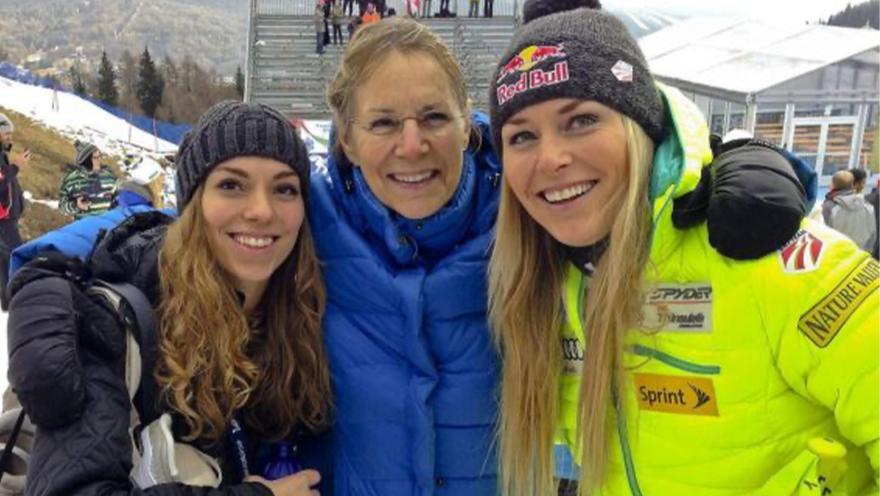

Comments
What an amazing recount of their journey! I also have ALS, and while my symptoms are different, I can understand exactly what was felt by all in this story. I also have a friend that was diagnosed with ALS just a couple months after I was. We have known each other for years, but recently it seems that only the two of us can understand each other and what it feels like. We have the same Dr at Northwestern Medicine in Chicago, and even carpool and coordinate our Dr visits together. We all take the final step alone, but it's priceless to have someone hold our hands on the long and miserable journey. I am travelling this year while I can still walk. I've already made a trip to Mexico, and Thailand and Bali are next! In some ways, ALS was a strange gift. I now only do the things that make me happy.
My husband suffers ALS 10 years ago, he is totally paralyzed already, ours lives changed and he decided to make his life totally miserable, no visits, no friends, no family, very mean with everyone especially with me at the point to doesn’t want me on your side, I left him because he wanted 4 years ago, 2 caregivers take care of him and he doesn’t has any communication with anybody, for me was the most difficult decision to left him
Join the conversation. Please comment below.